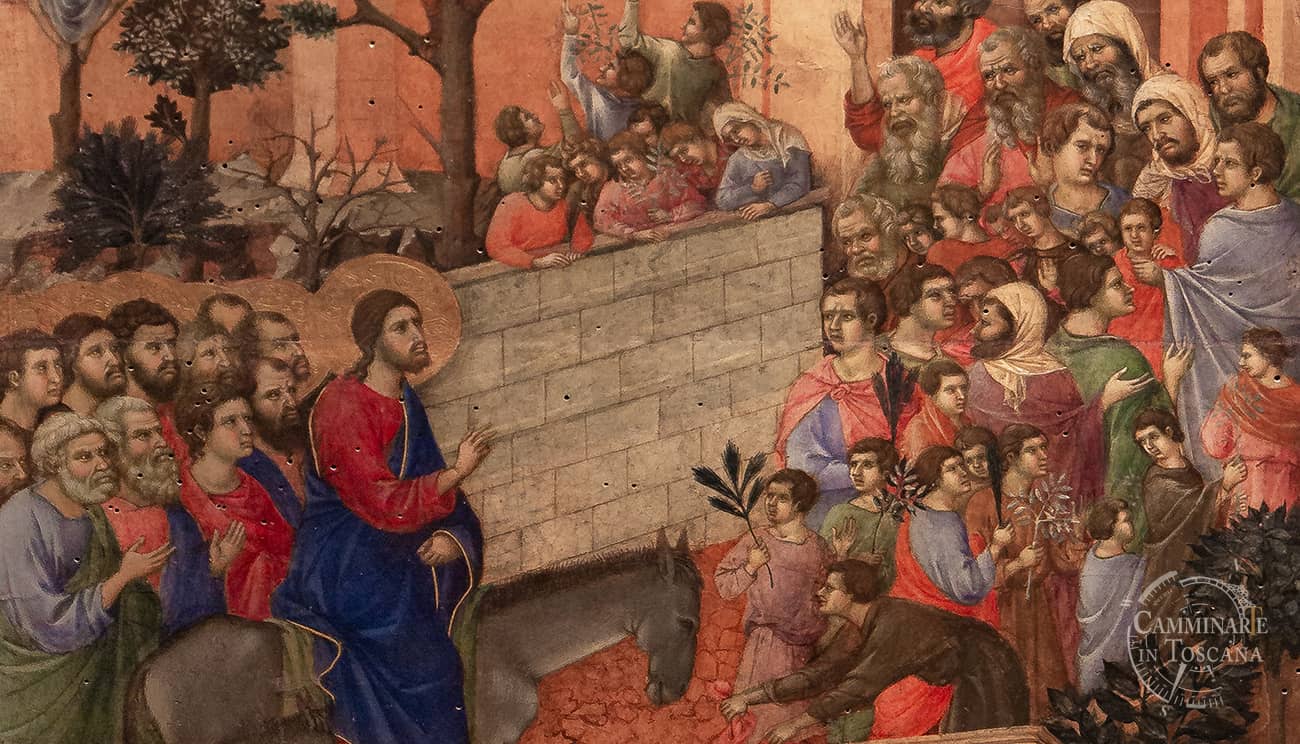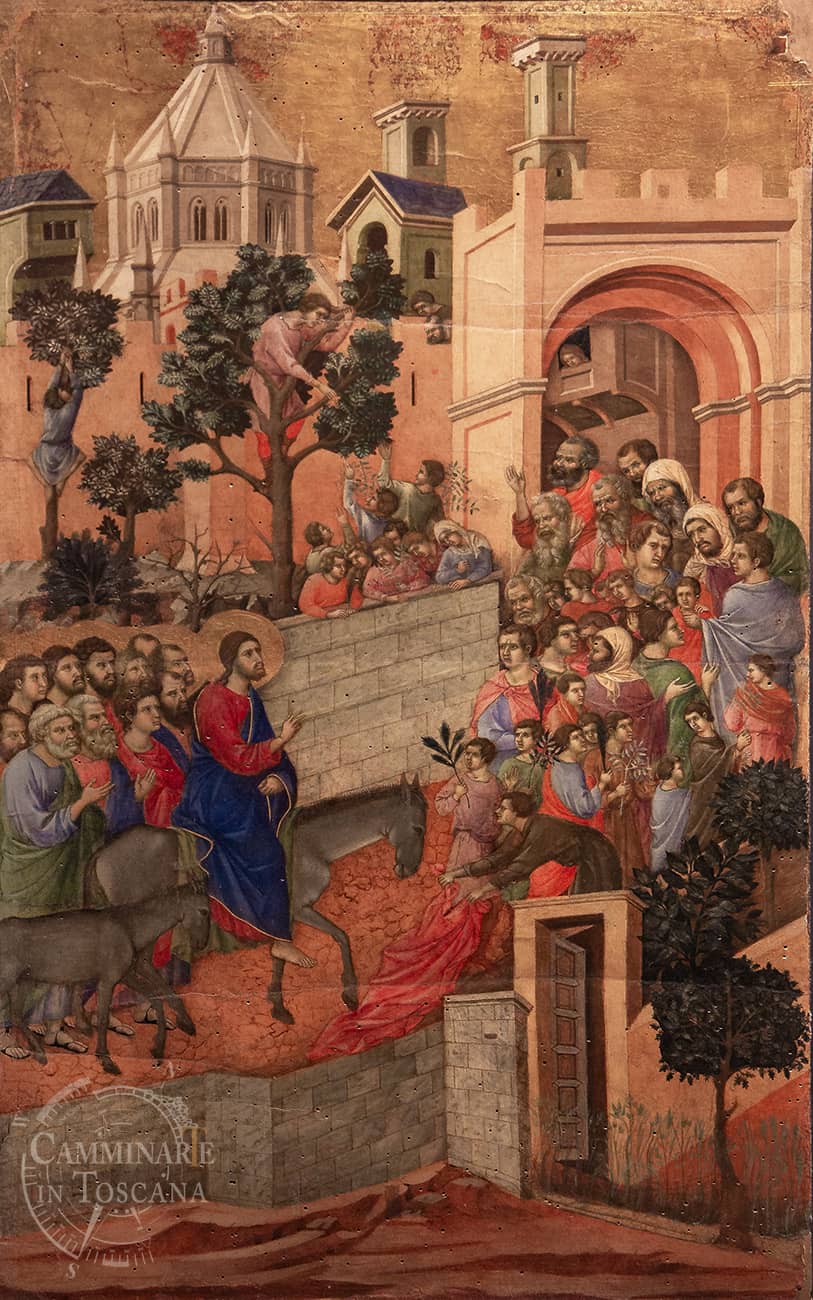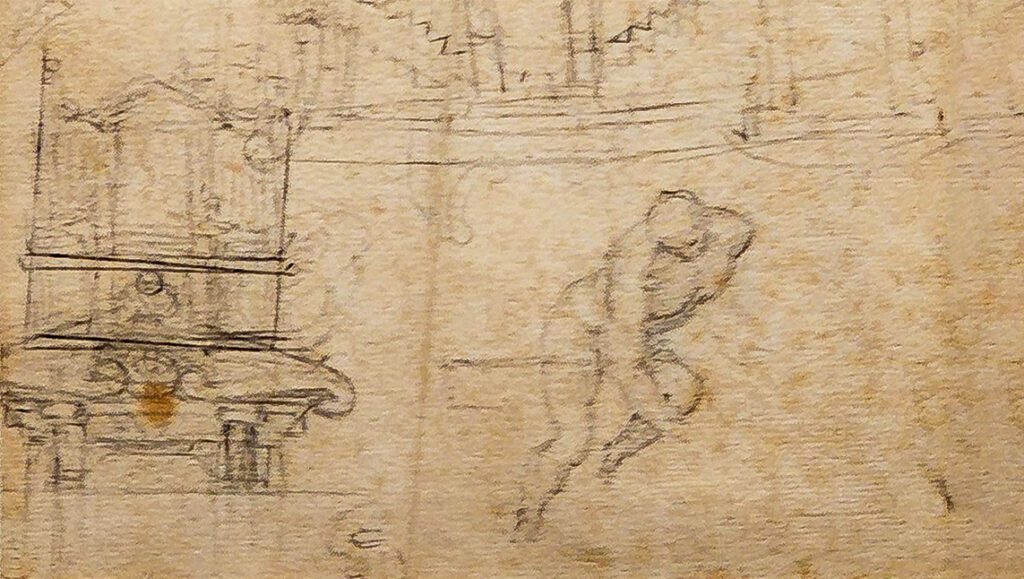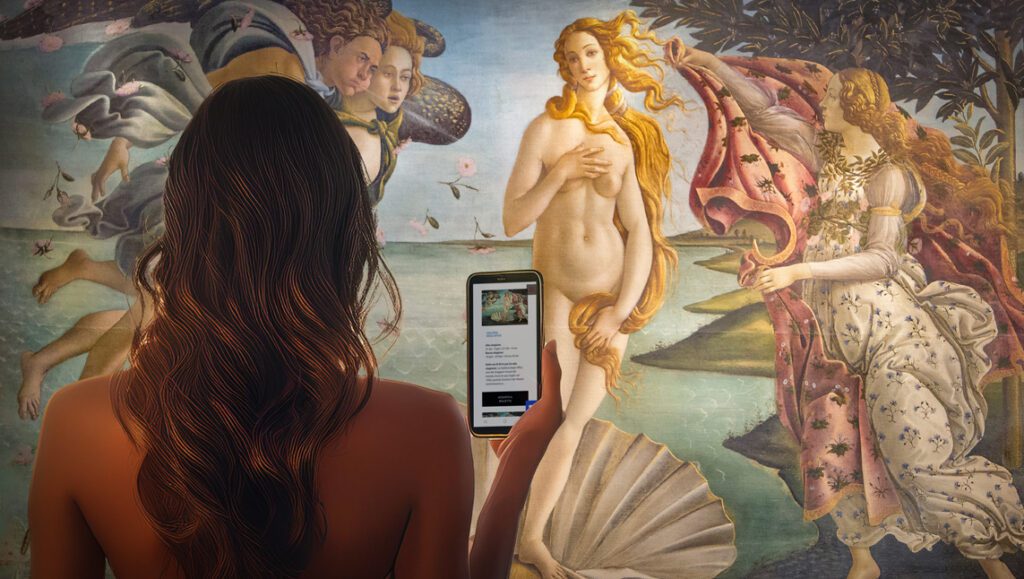
The Entrance to Jerusalem, one of the panels of the Maestà
The Entrata a Gerusalemme (Entrance to Jerusalem) is one of the panels that Duccio di Buoninsegna painted for the Stories of Christ, inside the great Maestà for the Cathedral of Siena. What can be defined as a real ‘altar machine’, is considered the largest altarpiece made in the history of Italian art.
The image presented to the faithful is that of the Virgin enthroned, flanked by saints, including the four protectors of Siena, together with others associated with Sienese devotion.
However, despite the panels with the stories of Christ forming a unity in the tradition of the illustrated life of Christ, few people associate these familiar scenes in Italian culture with the great Sienese polyptych.

Entrance to Jerusalem, Duccio di Buoninsegna, Maestà, Museo dell’Opera del Duomo, Siena
This is largely due to the fact the illustrations of the life of Christ have been memorised separately from the large central altarpiece of the Virgin enthroned. Additionally, the panels of the stories of Christ, including the one with the Entrance to Jerusalem painted by Duccio di Buoninsegna, are no longer connected to the large panel of the Maestà today.
The iconographic richness of the Sienese painter’s work was once such that the numerous panels of the stories of Christ, as well as of the Virgin, were not thought to be the predella, but included in a different retable, which was in any case connected to the bigger panel of the Virgin since it was its back.
This B side of the stories from Christ’s life was therefore positioned on a side not usually visible to the faithful, as it had its back to the altar.
The scene of the Entrance to Jerusalem portrays the well-known evangelical episode in which Christ enters the holy city on the back of a donkey, while followers welcome the entry of the Messiah exultantly, spreading carpets as he passes. It is worth noting that Duccio has used twice the space of the panels, which have a square shape in other cases, for this scene.
Returns to the Siena of that time
The painter has taken advantage of the greater verticality to provide more space for the representation of a townscape, which has various references to the architecture of contemporary Siena. A detail of great relevance for the painter is the arch of the large entrance gate to the city of Jerusalem, which constitutes an element of a gate that Duccio had in mind. To learn more about the Entrance to Jerusalem and other elements of the Maestà, a guided tour of the Museo dell’Opera del Duomo is recommended to reconstruct all the artistic and historical events of this masterpiece painted by Duccio di Buoninsegna ⟢



